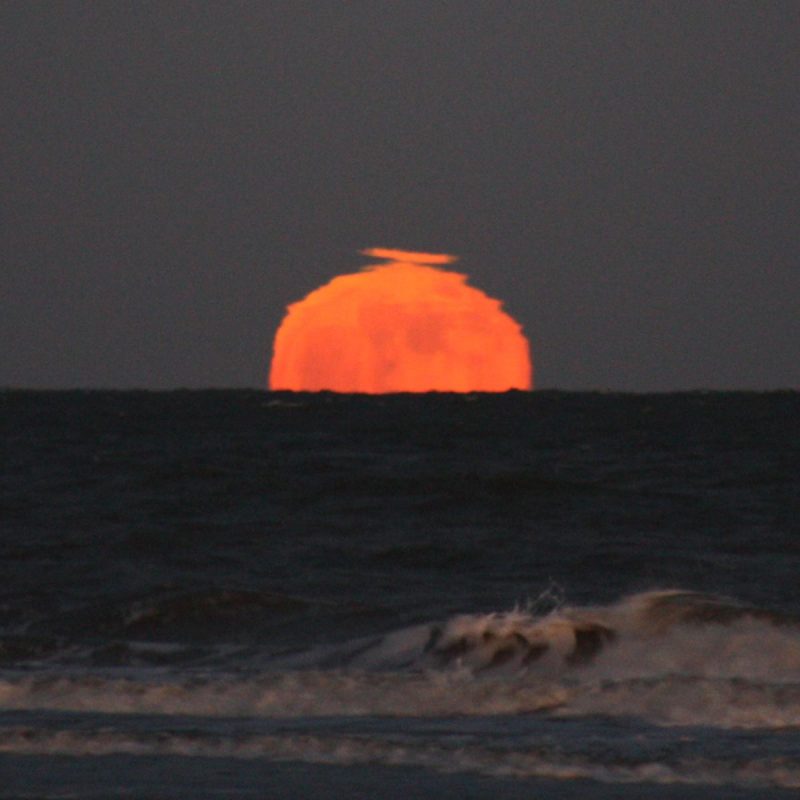
Oddly shaped suns and moons are great photo opportunities
Sunrises, sunsets, moonrises and moonsets are excellent opportunities to capture a particularly beautiful photograph. When you see them near the horizon, the sun and the moon can look distorted in the most fascinating ways. Their edges may appear jagged. Their bottom areas may flatten out or shrink into a pedestal. Nearby clouds and twilight color help make the artistic view even better.
But why does it happen? What causes the distortion in the appearance of a low sun or moon?
The answer is atmospheric refraction, the effect of light traveling through different densities and temperatures of air. Refraction is the same effect that causes a spoon in a glass of water to appear broken in two.
The fact is, when you gaze toward any horizon, you’re looking through more air than when you gaze overhead. It’s this greater quantity of air that causes oddly shaped suns and moons. At zenith (straight up) the atmosphere will be at its thinnest. That’s why professional astronomers prefer to observe their objects of interest as high up on the sky as possible (and as their telescopes allow). And that’s because it diminishes the effects of any atmospheric distortion lower in the sky.
More atmosphere = more distortion
So we know there’s more air in the direction of a horizon. Now consider all the different ways refraction affects a sunrise, sunset, moonrise or moonset.
But it’s not only the amount of atmosphere that plays a role. There’s also the pressure, the temperature and the humidity. They all affect the air density and thereby how much light rays will be bent, or refracted, along their path.
Thus, temperatures varying with different layers of air can spread the light so you see a layered image of the object you’re looking at. In other words, the light refracts more in some layers than in others.

More distortion = oddly shaped suns and moons
The bending of light rays in this manner is known as atmospheric refraction. Without any kind of disturbance, light would travel in a straight line, and give your eye a true image of what you see.
For objects with a small angular size – like stars – atmospheric refraction causes them to twinkle more the closer they are to the horizon.
But what about an object with a fair amount of surface area like the moon and the sun? For them, there is a change in the refractive effect along the height of it. Thus, the upper part travels through less atmosphere than the lower part, which makes the lower part more distorted.

What is a green flash?
When atmospheric refraction is at its most extreme, you might see a mirage. It’s the exact same situation, the light is bent and distorts the image. But here it can be refracted so much that there’s a mirroring effect and you will see drawn out or multiple images. Or it may show displaced images so the moon appears higher on the sky than it actually is.
A well-known mirage for the sun is the sought-after green flash.
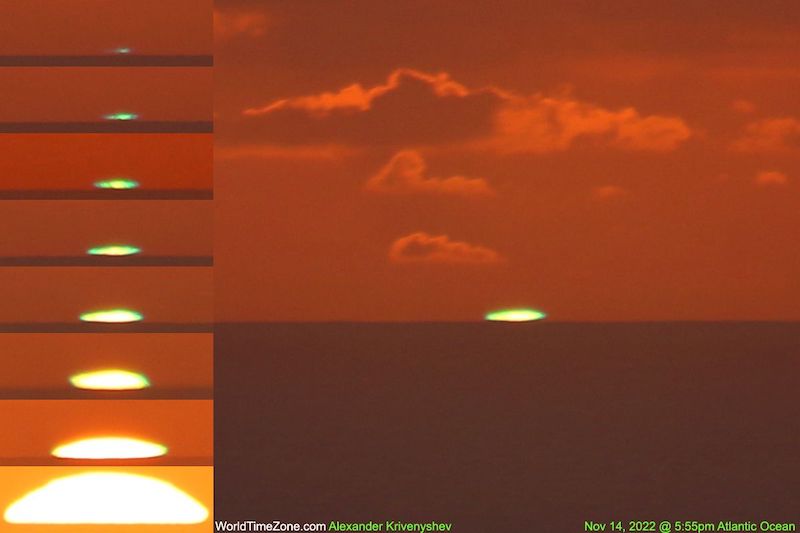
Why sunsets are red
Additionally, light of different wavelengths reacts differently. For example, blue light (which has more energy, a shorter wavelength and higher frequency) is more affected by refraction than red light. That means red colors have a larger chance of coming through to you than blue. That’s why sunsets, sunrises and the moon appear redder near the horizon.
The result of refraction is nature’s own form of art, perhaps reminiscent of impressionism. Maybe that is why we find it so appealing. The video below, captured by Mike Cohea, beautifully shows the effect of the thicker atmosphere as the young moon sets over Newport.
So, go out, bring your camera and keep watching the horizon (but never stare directly, or through a camera, at the sun). Then submit your best results to EarthSky Community Photos. We love seeing your photos!
Photos of oddly shaped suns
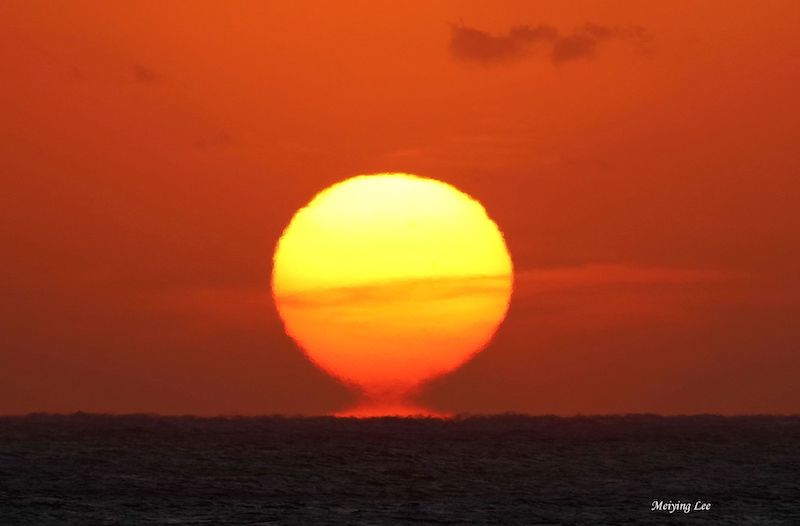
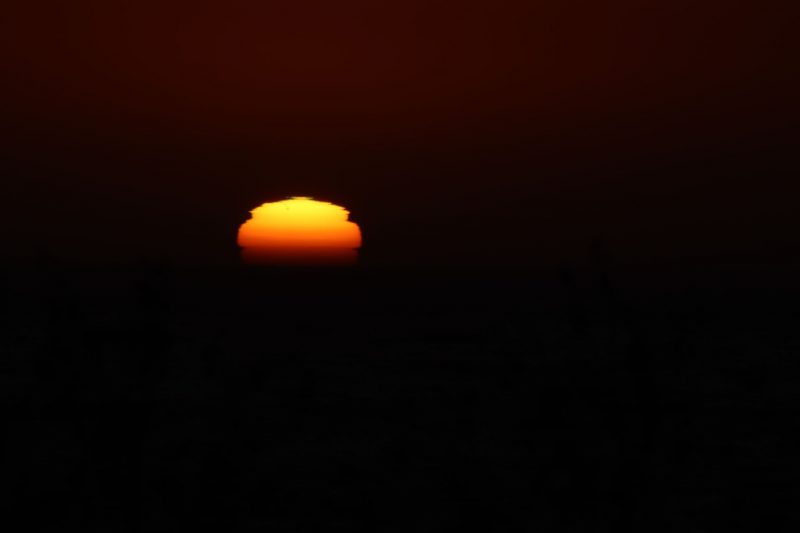
Photos of oddly shaped moons
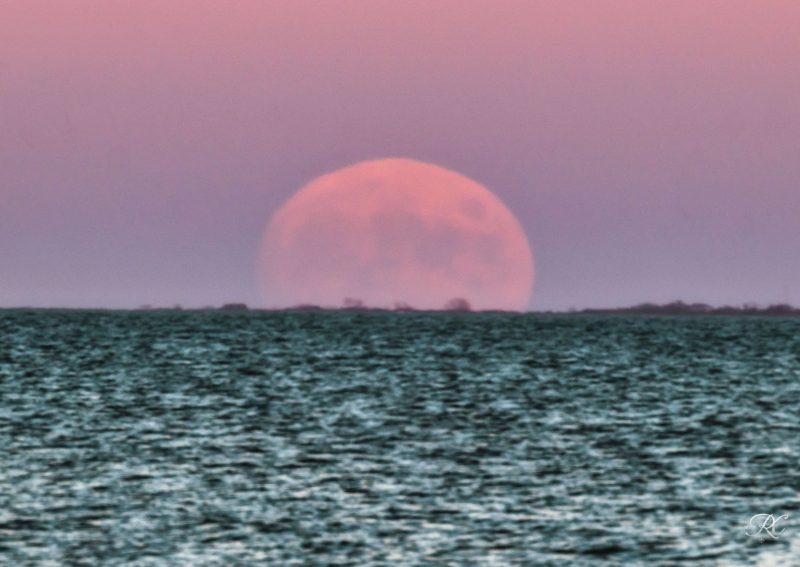
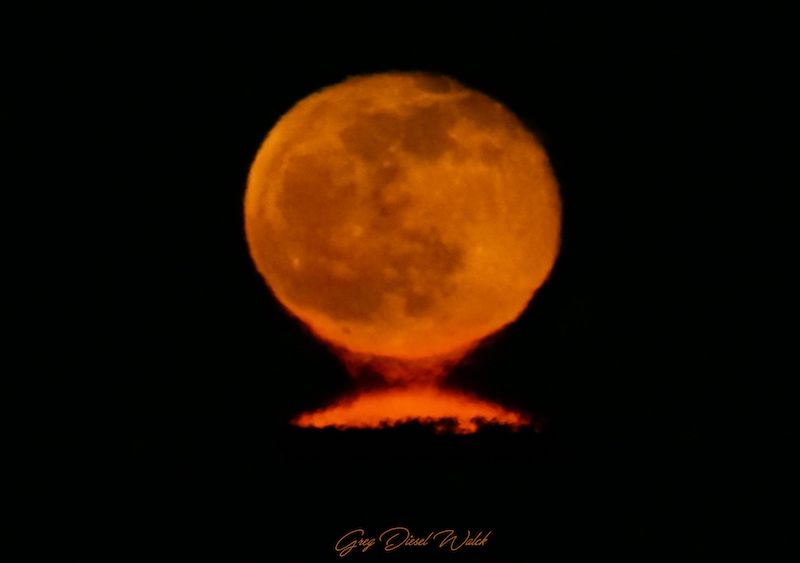
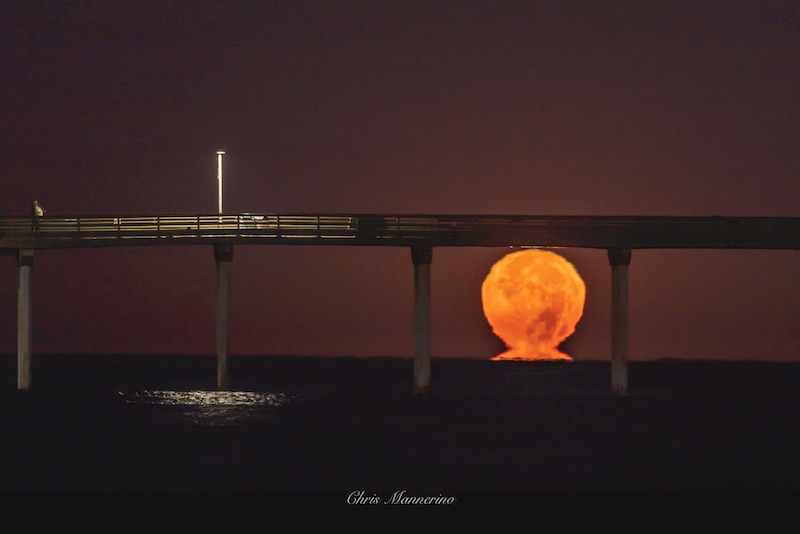
Bottom line: The amount of atmosphere between your eye and what you observe determines how much distortion you will see. This phenomenon – atmospheric refraction – is why the sun or moon may appear flattened near the horizon.











